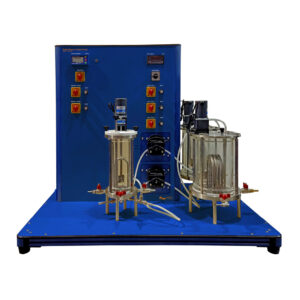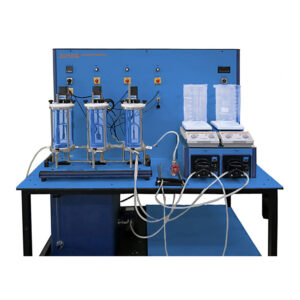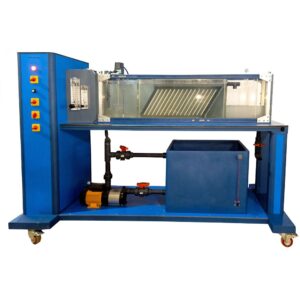The device two main components are a precise Hyde type gas meter with a 2.0 liter/rev capacity that consists of a specially built measuring drum encased in a gas-tight shell and sealed with water, and a Boys non-recording gas calorimeter with appropriate burners in the base. The entire set is made to a very high standard and includes all necessary accessories, such as thermometers with reading lenses, measuring vessels, and a general-purpose set of four burners for butane, propane, acetylene, ethylene, and propylene in addition to town and coke oven gas, natural and methane gas, butane, and methane gas.
Experiments
- To determine the Calorific Value V. (BTU’s and MJ/m³) of gaseous fuels.
- To determine the Gas Volume Factor (Bar – Vapor Pressure) of gaseous fuels.
- Average Water Inlet / Outlet Temperature.
- Average Difference in Temperature
- To determine the Gas Temperature.
Specifications
- A Boys non-recording gas calorimeter.
- A constant head overhead funnel with water connecting tubes.
- Two thermometers engraved on stem for temperate climates or for tropical climates, for inlet and outlet water temperatures.
- Two adjustable reading lenses, chromium plated, with spring clips for attaching to stems of thermometers.
- Two thermometers engraved on stem for temperate climates or for tropical climates, for effluent gas and room temperatures.
- Graduated cylinder for measuring outflow from calorimeter.
- Graduated glass vessel for collecting condensed products.
- General-purpose burner.
- Gas control valve (quadrant cock).
- Cylindrical metal vessel to contain alkaline solution into which the coils portion of the calorimeter is placed when not in use.
- Calorimeter with tube heat exchanger made of corrosion resistant material.




